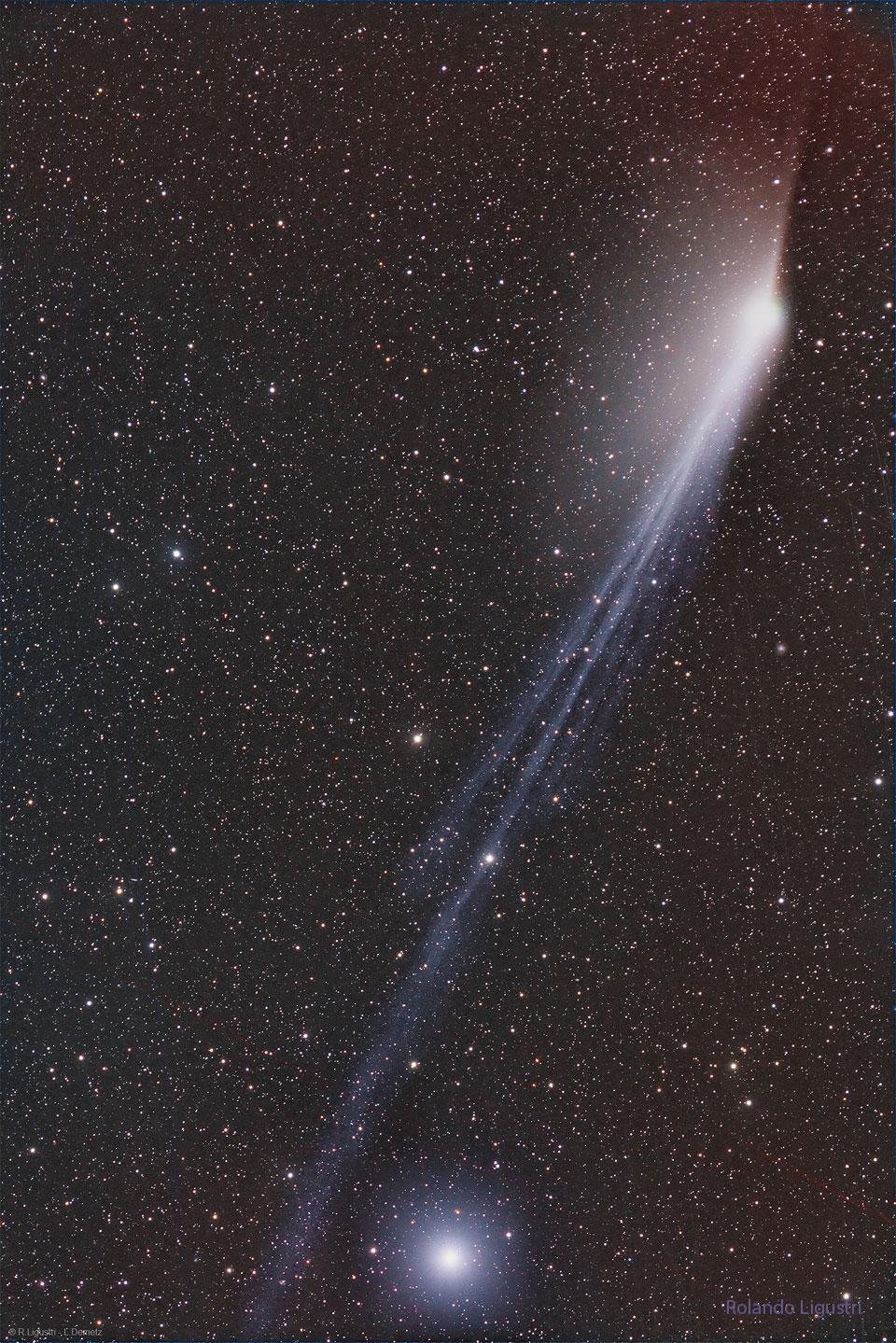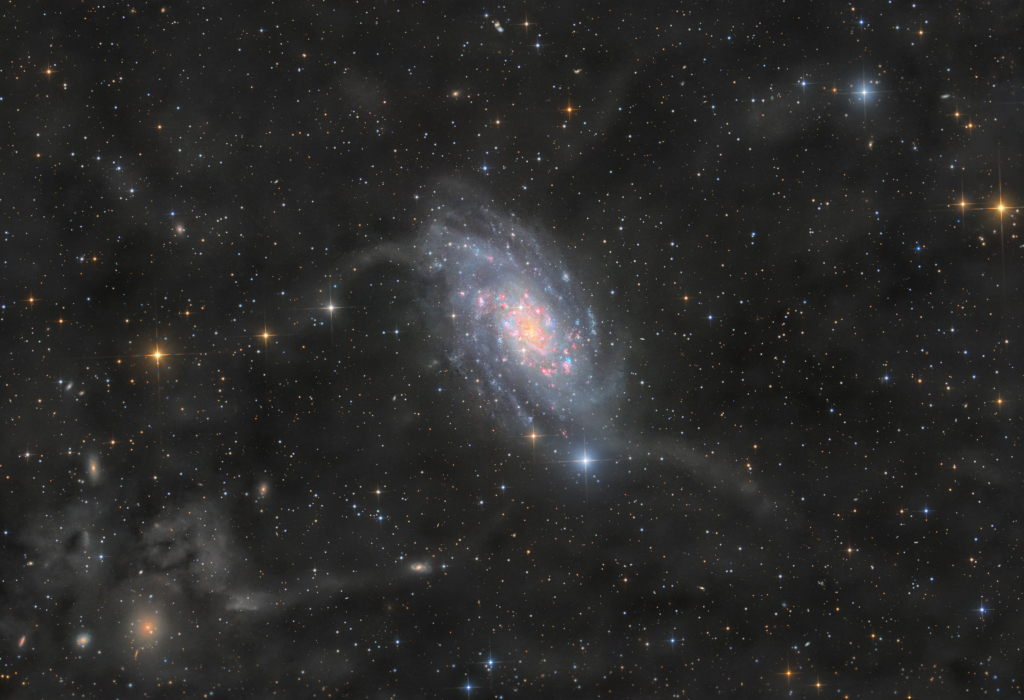Nombre total de pages vues
05/06/2024
NUCLEAIRE - Comment survivre à une explosion nucléaire ? Mettez des priorités en place
ASTRONOMY - Shadow of a Martian Robot
2024 June 5
Image Credit: NASA, JPL-Caltech, MSSS, ASU, NeV-T, Perseverance Rover;
Processing & Copyright: Neville Thompson, Gigapan Zoom
Explanation: What if you saw your shadow on Mars and it wasn't human? Then you might be the Perseverance rover exploring Mars. Perseverance has been examining the Red Planet since 2021, finding evidence of its complex history of volcanism and ancient flowing water, and sending breathtaking images across the inner Solar System. Pictured here in February of 2024, Perseverance looks opposite the Sun and across Neretva Vallis in Jezero Crater, with a local hill visible at the top of the frame. The distinctively non-human shadow of the car-sized rover is visible below center, superposed on scattered rocks. Perseverance, now working without its flying companion Ingenuity, continues to search Mars for signs of ancient life.
04/06/2024
SANTé/MEDECINE - Virus et bactéries mortels - Mycobacterium tuberculosis, l'agent mortel de la tuberculose
NUCLEAIRE - Comment survivre à une explosion nucléaire ? Privilégiez la distanciation sociale
ASTRONOMY - Comet Pons-Brooks Develops Opposing Tails
2024 June 4
Image Credit & Copyright: Rolando Ligustri & Lukas Demetz
Explanation: Why does Comet Pons-Brooks now have tails pointing in opposite directions? The most spectacular tail is the blue-glowing ion tail that is visible flowing down the image. The ion tail is pushed directly out from the Sun by the solar wind. On the upper right is the glowing central coma of Comet 12P/Pons–Brooks. Fanning out from the coma, mostly to the left, is the comet's dust tail. Pushed out and slowed down by the pressure of sunlight, the dust tail tends to trail the comet along its orbit and, from some viewing angles, can appear opposite to the ion tail. The distant, bright star Alpha Leporis is seen at the bottom of the featured image captured last week from Namibia. Two days ago, the comet passed its closest to the Earth and is now best visible from southern skies as it dims and glides back to the outer Solar System.
03/06/2024
SANTé/MEDECINE - Virus et bactéries mortels - Clostridium botulinum - la bactérie qui empoisonne au botox
NUCLEAIRE - Comment survivre à une explosion nucléaire ? Restez confiné pendant 24 heures
ASTRONOMY - NGC 2403 in Camelopardalis
2024 June 3
Image Credit & Copyright: (Team F.A.C.T.) Lilian Lbt - Cyrille Malo - Maxime Martin - Clément Daniel - Paul Grasset - Louis Leroux-Géré
Explanation: Magnificent island universe NGC 2403 stands within the boundaries of the long-necked constellation Camelopardalis. Some 10 million light-years distant and about 50,000 light-years across, the spiral galaxy also seems to have more than its fair share of giant star forming HII regions, marked by the telltale reddish glow of atomic hydrogen gas. The giant HII regions are energized by clusters of hot, massive stars that explode as bright supernovae at the end of their short and furious lives. A member of the M81 group of galaxies, NGC 2403 closely resembles a galaxy in our own local galaxy group with an abundance of star forming regions, M33, the Triangulum Galaxy. Spiky in appearance, bright stars in this portrait of NGC 2403 are in the foreground, within our own Milky Way. Also in the foreground of the deep, wide-field, telescopic image are the Milky Way's dim and dusty interstellar clouds also known as galactic cirrus or integrated flux nebulae. But faint features that seem to extend from NGC 2403 itself are likely tidal stellar streams drawn out by gravitational interactions with neighboring galaxies.
02/06/2024
SANTé/MEDECINE - Virus et bactéries mortels - Le virus de la grippe espagnole cette épidémie ravageuse de 1918
ASTRONOMY - Andromeda and Friends
2025 November 15 Andromeda and Friends Image Credit & Copyright : Piotr Czerski Explanation: This magnificent extragalactic skyscap...

-
2022 September 26 All the Water on Planet Earth Illustration Credit: Jack Cook, Adam Nieman, Woods Hole Oceanographic Institution ; Data ...
-
2025 May 11 The Surface of Venus from Venera 14 Image Credit: Soviet Planetary Exploration Program , Venera 14 ; Processing & Copyri...








